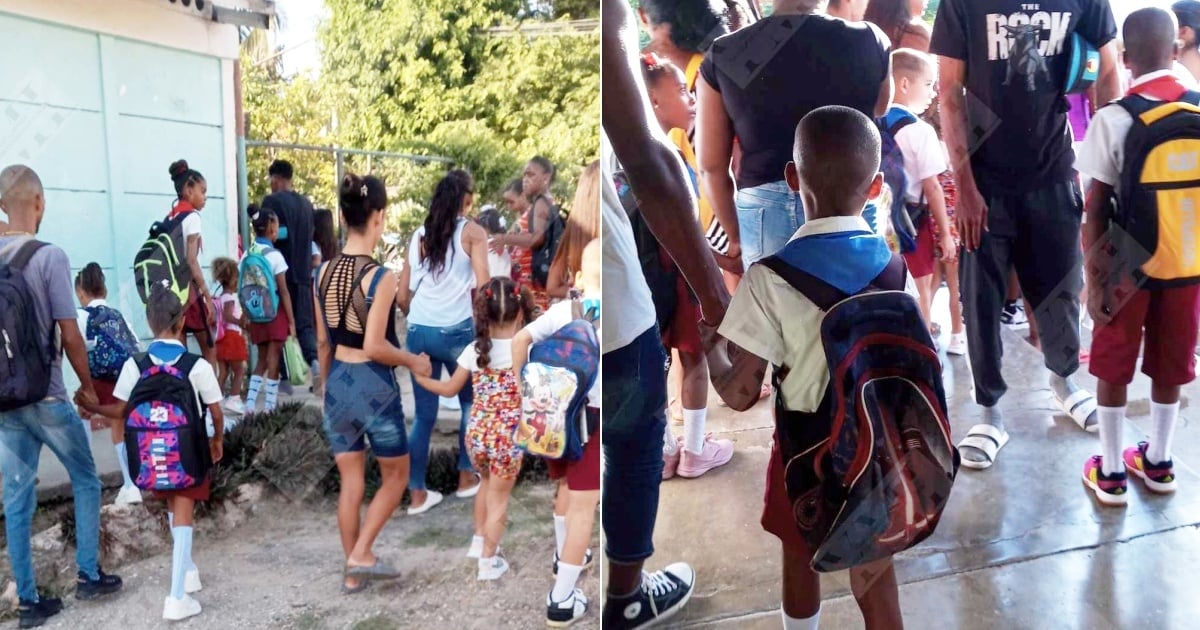
This Monday marks the beginning of the 2024-2025 school year in Cuba, characterized by the crisis affecting the island in all areas, with its most evident manifestation in the educational field being a deficit of 24,000 teachers.
A total of 1.6 million students in primary, secondary, and pre-university education across the country are called to the classrooms, with 12.5% of teaching positions unfilled - which means one in eight - and without the majority of school uniforms being able to be distributed.
The Cuban Minister of Education, Naima Trujillo Barreto, acknowledged that this "is going to be a difficult school year," but she added that "nothing will prevent" the island from maintaining the "principles of gratuitousness and universality," as well as its "aspirations in terms of quality."
Lack of teachers in Cuba
With an unprecedented migration movement in Cuba, one of the main challenges is basic: the lack of teachers.
According to data from the Ministry of Education - quoted by the Efe agency - the staff for the course that begins today consists of 156,000 teachers, to which another 12,000 have returned - including retirees - but the problem is that the country would need about 24,000 more to meet the demand for teachers.
The shortage of teachers is concentrated in secondary education and in pre-university programs for exact sciences, both in Havana and in other provinces in the west and center of the country.
The crisis has been influenced not only by the massive emigration abroad but also by the flight of teachers to other better-paying sectors of the economy or the lack of students in educational careers.
Few uniforms
The Minister of Education also acknowledged problems in the sale of uniforms due to "organizational and planning deficiencies of the responsible bodies," including the purchase of fabrics abroad.
According to official data, the demand is for 4.2 million uniforms, and the priority is for 1.7 million for the initial courses of each cycle, according to the Light Industry Group, part of the Ministry of Industries of Cuba.
Regarding the delivery of materials, this school year includes the free delivery - "with a strict regulation" - of 13 million imported notebooks and 38 million pencils, reported the Ministry of Education.
Education authorities have emphasized that, "despite the complexities," this will be one of the most secure courses in that regard, with a bibliography that includes textbooks in line with its recently approved plan for the improvement of education.
Miguel Díaz-Canel recently stated on social media that "nothing will prevent" the opening of Cuban schools "in the midst of an unprecedented economic blockade (by the United States) that ruthlessly harms the educational system."
This Monday, the ruler wished the students a "happy return to the classrooms."
"Amid the country's complex economic situation and heightened blockade, essential methodological, technical, and logistical guarantees are secured," wrote Prime Minister Manuel Marrero on X.
Beyond statistics and government self-praise, the reality is that thousands of children are returning to the classrooms today as part of a significant challenge for parents who will have to ensure, throughout the entire school year, breakfast, snacks, and shoes for them, which, given the current crisis in Cuba, is no small task.
The legend has it that, in this schoolyard, your child will break shoes worth more than 12,000 pesos in just a few days, joked Santiago journalist Yosmany Mayeta this Monday on Facebook while sharing images from the newly started school year.
"The 2024-2025 school year has begun in #Cuba amid misery, scarcity, disorganization, epidemics, and blackouts. Today, from San Antonio to Maisí in the Island of Oskuristán, the new school year has started," sarcastically noted the news portal La Tijera, which documented the material decline of the educational system in Cuba.
"In the images, you can see classrooms with broken blinds, unpainted walls, chairs without tables, broken tables, and many students will have to endure the intense heat in the midst of the wave of blackouts that have been affecting Cubans for nearly 10 months," noted the source along with some photos of the primary school "Reiner Páez" in the Havana municipality of Cerro.
What do you think?
COMMENTFiled under: